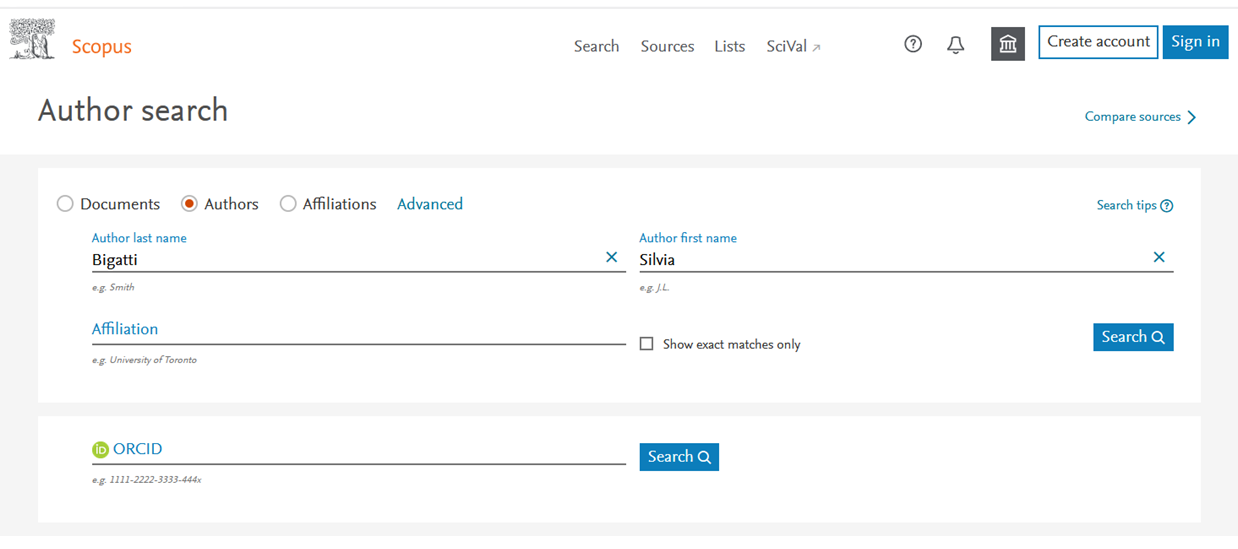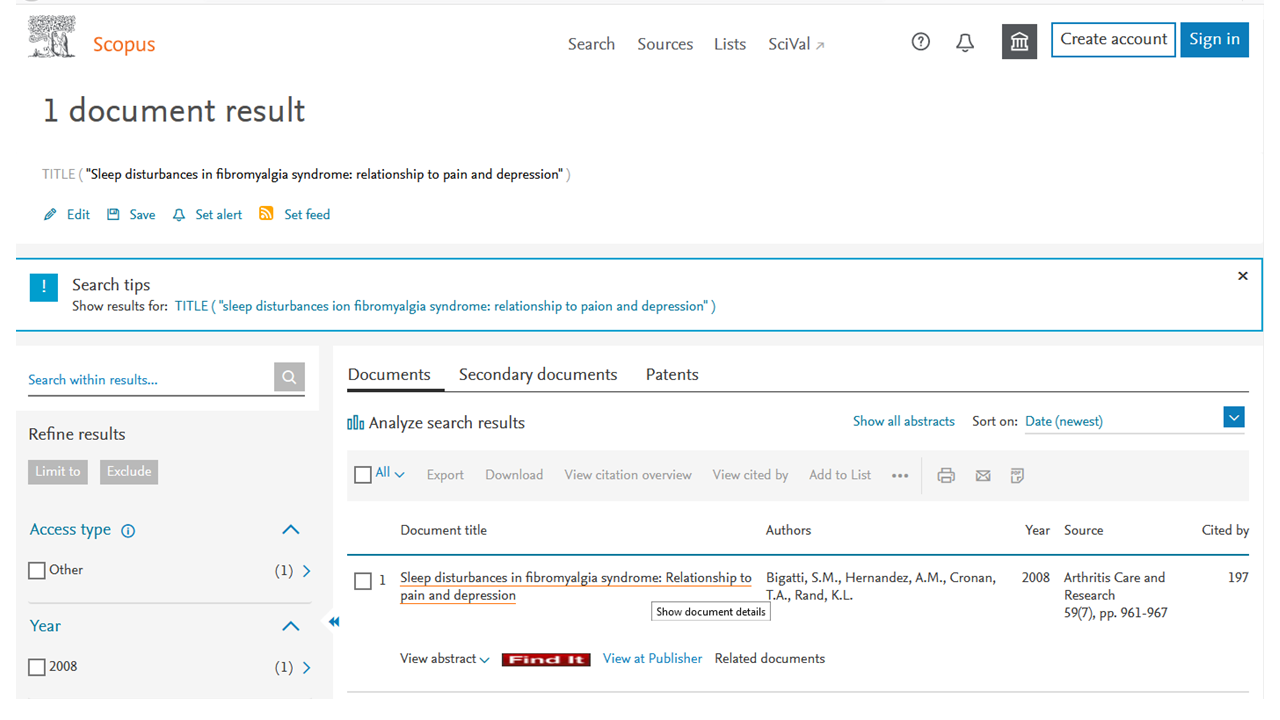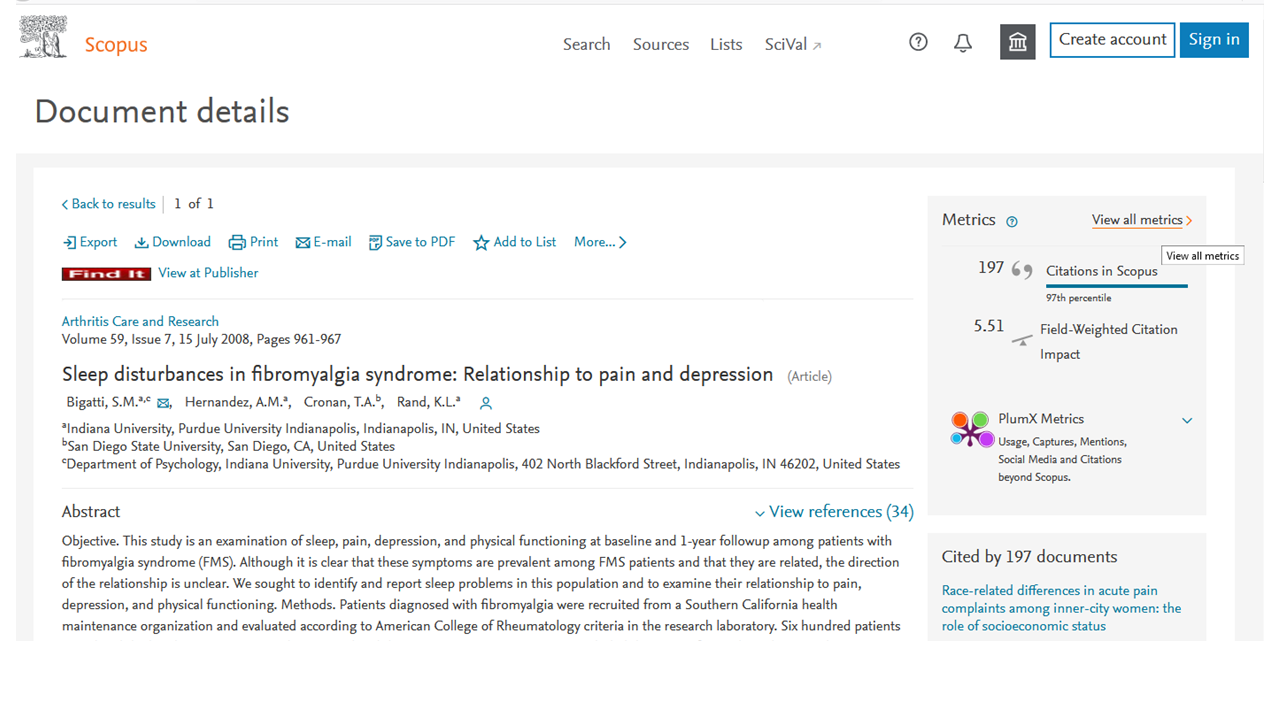Introduction
Scopus is a citation and abstract database from Elsevier that includes more than 36,000 titles from approximately 11,600 publishers, of which 34,346 are peer-reviewed journals. Subjects covered include life sciences, social sciences, physical sciences and health sciences. Though its coverage is broad, not all journals will be indexed in Scopus. If not, you may want to check Web of Science, the other major citation and abstract database. The Scopus subscription is provided by the IUPUI libraries.
This recipe will show you how to gather:
- citation counts
- Field Weighted Citation Impact (FWCI)
- citation benchmarking percentile
What you need
Before you get started, we recommend having a copy of the cv handy and a file to record the data. We use Excel, but if you prefer Word tables, those work too. A sample table structure is below.
| Citation or Title | Citation count | FWCI | Citation benchmarking |
Gesselman, A. N., Bigatti, S. M., Garcia, J. R., Coe, K., Cella, D., & Champion, V. L. (2017). Spirituality, emotional distress, and post‐traumatic growth in breast cancer survivors and their partners: an actor–partner interdependence modeling approach. Psycho‐oncology, 26(10), 1691-1699. | 10 | 1.13 | 75th percentile |
Bigatti, S. M., Hernandez, A. M., Cronan, T. A., & Rand, K. L. (2008). Sleep disturbances in fibromyalgia syndrome: relationship to pain and depression. Arthritis Care & Research: Official Journal of the American College of Rheumatology, 59(7), 961-967. | 197 | 5.51 | 97th percentile |
Searching Scopus
You can access Scopus from the University Library database list at https://iupui.libguides.com/az.php?a=s
Scopus has several search options. If you are gathering metrics for several publications by the same author, we recommend searching by author. However, author profiles may not include all publications.

For specific articles or articles that aren't listed in the author profile, we recommend a document search using the title or DOI.

If there is a match, you will see a results screen. Select the correct author by clicking on their name.

Select the correct document by clicking on the title.

View the document details
The document details page will display some of the metrics - the citation count within Scopus and the FWCI - but not the citation benchmarking percentile. We recommending clicking on the link to "View all metrics" in the upper right-hand corner of the page.

View the metric details
The metrics details page contains the raw citation count within Scopus, the Field Weighted Citation Impact, and the citation benchmarking percentile. Capture these data and enter them into the table.

How to use and talk about citation metrics
Citation metris are generally regarded as strong evidence and can be useful indicators of usage and scholarly impact. However, remember that scholars cite for many reasons, so citation metrics should not be considered an indicator of quality. Additionally, metrics about journals are not good predictors for the number of citations any given article will receive. See our brief on the Journal Impact Factor for more information.
Below, we have provided a few examples for how you might talk about or use citation metrics as evidence in your dossier.
This article has received 4 citations (Scopus) and has a Field Weighted Citation Impact of 3.23, which indicates that it has received more than 3 times as many citations as other articles published in the field of Public Administration for 2018.
My 2018 article “Watch Me Code” has already been cited 20 times, which places it in the 92nd percentile for articles of a similar topic and publication date (source: Scopus; See Appendix A: Table 1).







